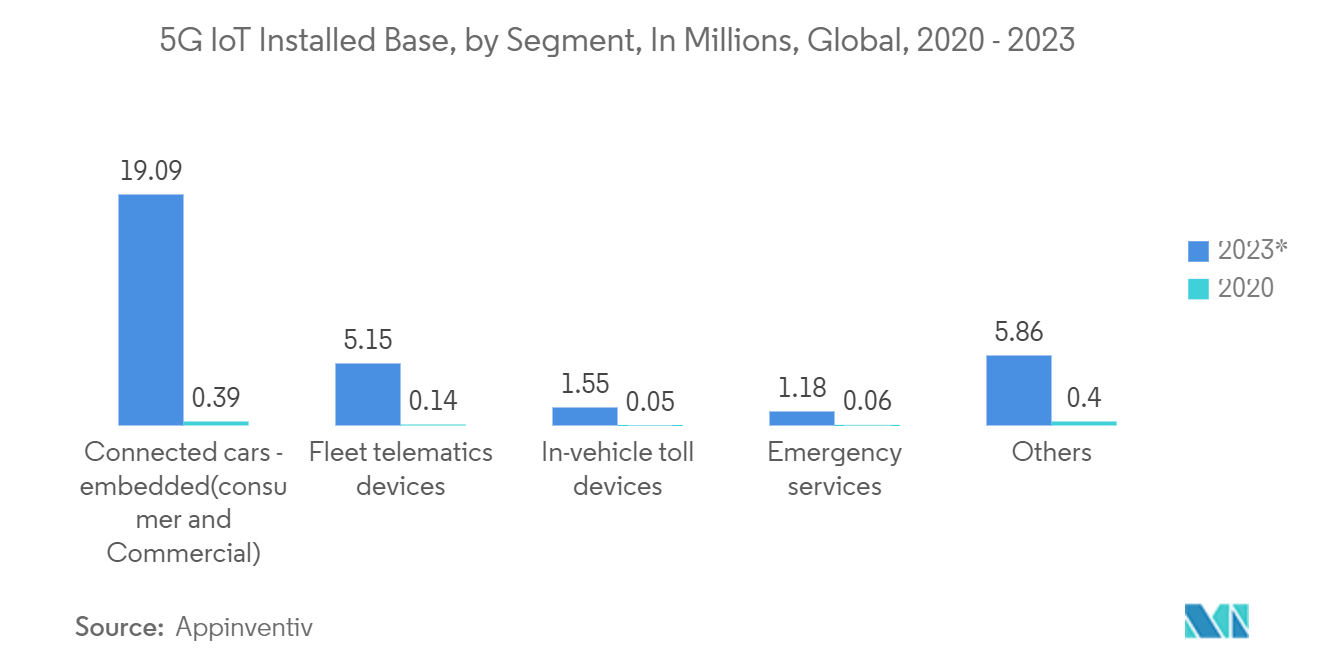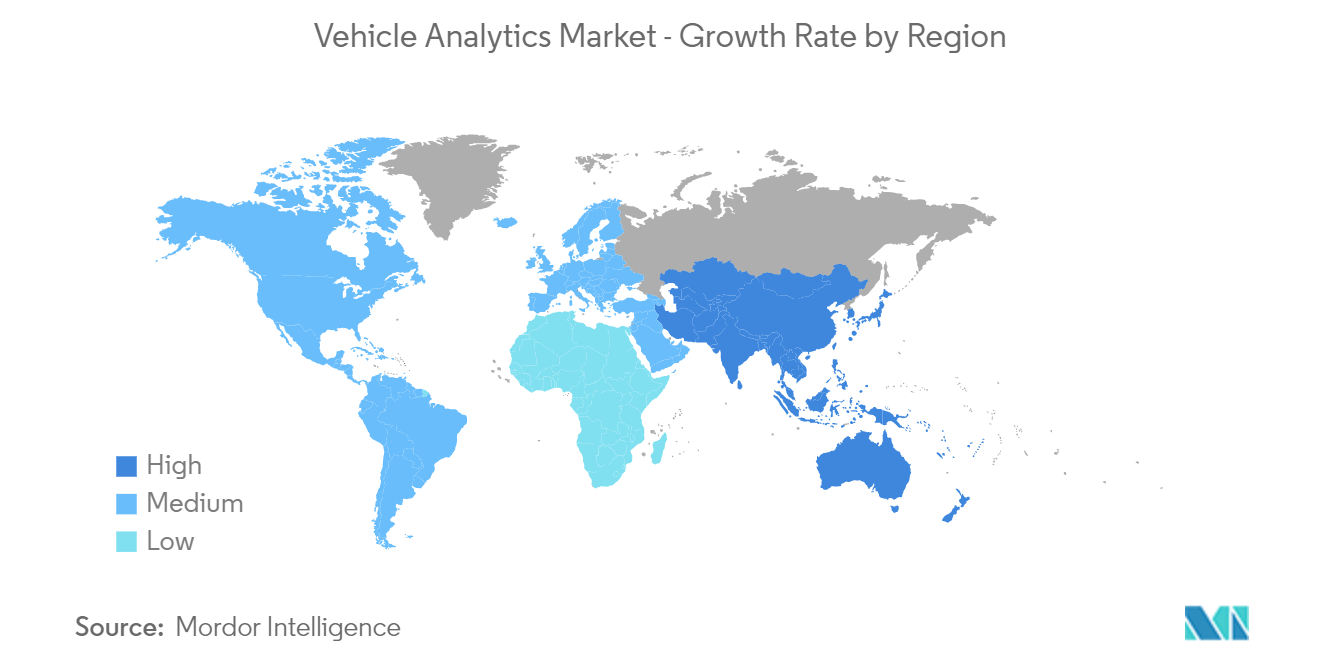Market Trends of Vehicle Analytics Industry
Predictive Maintenence is Expected to Hold Significant Market Share
- As automakers are constantly assessing the performance of the vehicle part in real-time through sensors, it unlocks the opportunity for a predictive maintenance approach. Data can be pulled out from most vehicles of a given year and model, and that information can be compared with warranty repair trends using predictive maintenance. These trending issues are carefully observed and addressed, limiting the fallout from large-scale recalls, minimizing unnecessary wrench time, and potentially saving lives.
- Moreover, vehicle breakdowns are one of the significant causes of road accidents. These breakdowns often occur due to human negligence in the timely service and maintenance of vehicles. Predictive analytics solutions inform the owner about the potential maintenance requirement before a study can occur. Data collected from the various sensors fitted in a car assists in carrying out predictive maintenance tasks.
- Cognitive predictive maintenance makes holistic, real-time, and deep insights possible. Also, every aspect of a manufacturer's processes can be connected through IoT, leading to smart and efficient decision-making. According to Appinventiv, the global 5G Internet of Things (IoT) endpoint market is forecast to grow significantly in the connected car segment, from 0.4 million in 2020 to 19.1 million units in the current year. The 5G IoT installed base is forecast to grow to around 49 million this year.
- The market is still an open place for any advanced predictive solutions. It is dominated by simplistic predictive maintenance solutions, which monitor the wear and usage of clutches and brake pads. A similar wear-out apparatus is monitored, and projections are made about the future.
- Also, fleet managers are increasingly incorporating these solutions to stay on top of maintenance and mitigate equipment failure in advance. The adoption has been easier with the technological advancement in communications with capabilities, such as GPS tracking, emerging as a cost-efficient solution.
- The market has growth potential as the demand for electric vehicles increases. In EV(s), voltage variations during charging can damage the battery. Predictive analytics integrated with artificial intelligence (AI) facilitates the feedback and monitoring system for batteries to avoid unnecessary damage that assists in extending the lifespan of batteries.

Europe is Expected Holds Significant Market Share
- European countries leverage advanced technology to enhance road safety. According to ITU, 38% of traffic fatalities in Europe occur inside urban areas, emphasizing the need for stringent road safety implementations in Europe. The increasing adoption of self-driving cars and newer technologies on the road highlight the growing scope of vehicle analytics implementations. In July last year, according to an EU official involved in making the laws for fully self-driving cars in Europe, the EU's executive planned to propose the world's first technical legislation by the end of September, allowing member countries to approve the sales and registration of around 1,500 vehicles for every carmaker model for every year installed, with advanced self-driving technology.
- The development of big data concepts has made it possible for automakers to store structured and semi-structured data in vehicles that can gather, store, analyze and compare the data on their own. This, thereby, helps to produce useful results and make decisions that drive the demand for vehicle analytics in this region.
- Cloud deployment of vehicle analytics has been one of the key drivers of the market. Vehicle analytics has become immensely efficient in Europe, leveraging advanced computing features online and remotely accessing cloud software solutions. Automakers can now leverage these remotely accessible systems to analyze vehicle metrics, determine the vehicle's health, and contribute to road safety and advanced transportation technology development.
- The companies collaborate to provide improved systems through cloud technologies, allowing automotive businesses to leverage the cloud in Europe, which is crucial for new businesses to try solutions like vehicle analytics. In November last year, NavInfo Europe, a prominent software service provider for the automotive industry, and Tencent Cloud jointly announced their partnership, meeting all the European regulatory requirements and standards, including GDPR.
- Furthermore, in February last year, OCTO Telematics announced signing a new agreement with Ford Motor Company to extend its data streaming collaboration into Europe. This would build on the initial agreement signed in the North American market in July of the previous year. By leveraging Ford's connected vehicle data, OCTO would improve its market-proven telematics services in insurance and analytical services in the United Kingdom, Germany, Italy, France, and Spain.


